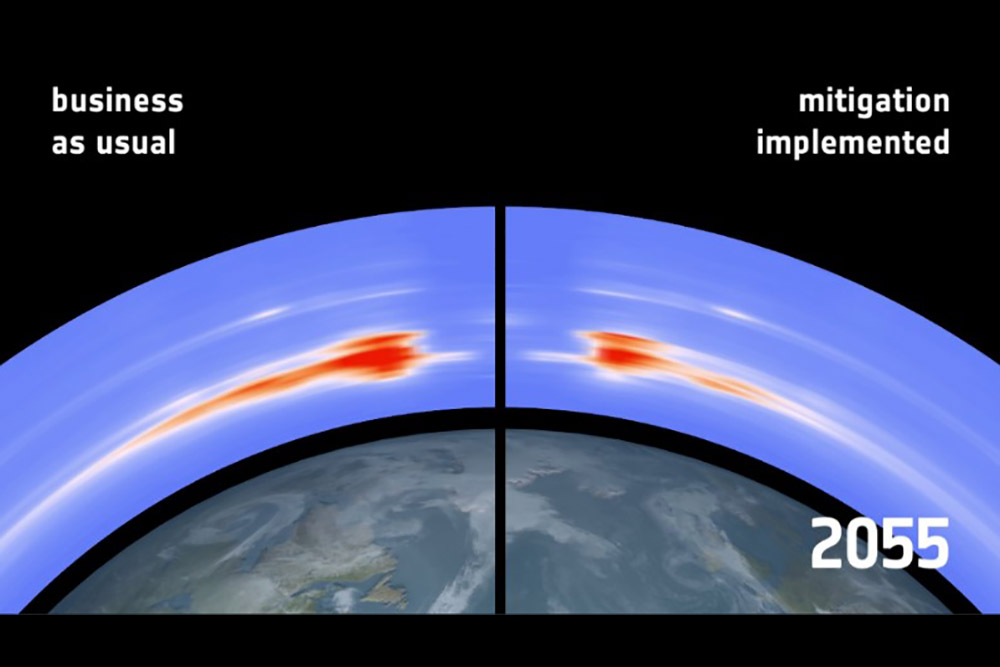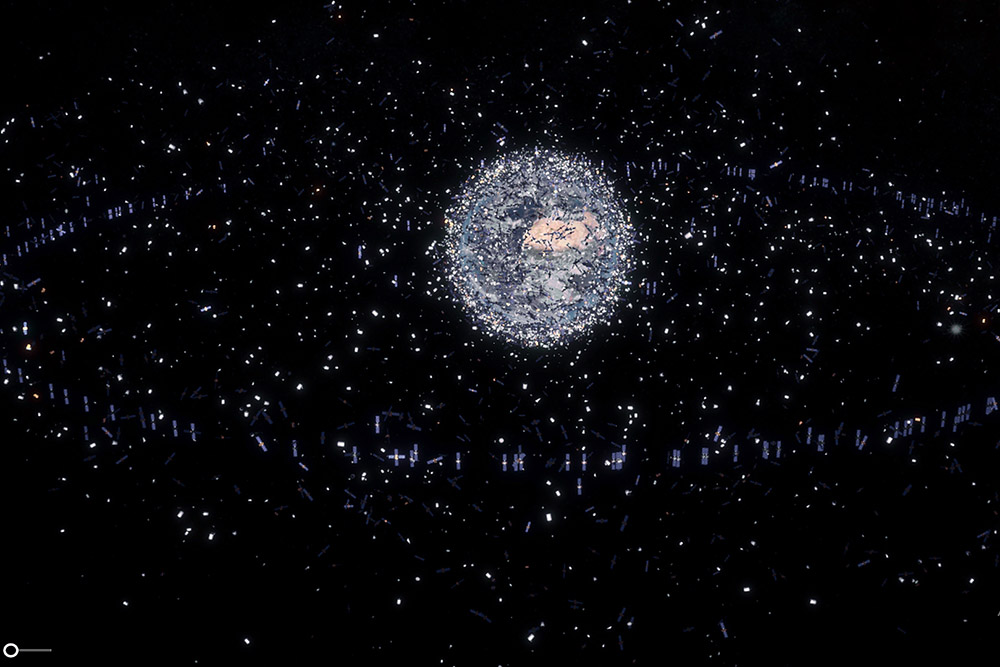Authors: Katja Wätzig, Anika Peucker | Translation: Anna Knollmann
Cleaning outer space without fuel
Our modern and networked world is no longer conceivable without the support of satellites from space. Navigation, broadcasting or mobile communications, earth observation for weather forecasts and disaster control are just a few examples. Space stations, such as the ISS, are used for research purposes and many smaller satellites measure the shape of our earth or provide data on changes in climate and vegetation. But what happens to all these artificial satellites when they are no longer needed? So far there are no affordable solutions for this.
The Kessler Syndrome - more and more debris in space
To meet the needs of everyday life, research and industry, Russia, the USA, the EU, China, Japan and other nations have launched numerous satellites into orbit since the late 1950s. After their lifetime, however, the artificial satellites are deactivated, and so far they have generally remained in orbit. The operators did not retrieve the satellites. This turns them into space debris and constantly poses a risk of collision.
According to the European Space Agency (ESA), most of the satellites are located at an altitude of about 800 km (the area marked red in the picture). It becomes problematic when satellites and debris are in the same orbit. Active satellites try to avoid collisions. However, this is not always possible. In 2009, for example, the first satellite collision occurred within the earth's orbit.
The resulting debris from such collisions can lead to further collisions - especially with satellites. There is a cascade-like increase in the number of small objects, which is known as Kessler syndrome. Research stations therefore observe more than 10,000 pieces of debris with radar and telescopes. They hope that this will enable them to better predict a possible collision. Nevertheless, according to ESA, there are about six million objects larger than one centimetre in near-Earth orbit.
The ISS space station or some weather satellites are not immune to collision per se, because they are in low Earth orbit - the ISS, for example, is about 400 km away. The space station has already had to dodge debris several times. In 2015, for example, it was critical. A disused weather satellite was heading for the measuring station. To be on the safe side, the crew had to be evacuated into the Soyuz capsule - their "space rescue boat" that brings them to Earth - until the danger was averted.
With the constant increase in space debris and new missiles, it is therefore becoming more and more urgent to find solutions that remove shut-down satellites from orbit. Equipped with additional engines, satellites can be transported into the so-called graveyard orbit. This orbit is located at an altitude of over 36,000 km. There is, however, another, much more cost-effective variant.
Together with their partners TU Dresden, University Carlos III Madrid, University of Padova, SENER and Advanced Thermal Devices, the IKTS scientists* are developing alternative propulsion systems in the EU-funded project "E.T. Pack" in order to bring the artificial satellites back to Earth from their orbit after use.
Ceramics for space: Low work function tether (LWT)
In order for satellites to re-enter the earth's atmosphere, they must be slowed down and lose altitude. Additional thrusters require fuel, batteries and solar panels cause considerable additional weight and thus costs. The scientists* therefore want to use a special electrodynamic effect to slow down the satellites slowly and guide them towards the Earth. When they re-enter the Earth's atmosphere, the satellites will simply burn up.
A metal foil several kilometers long is used for this purpose, which is coated with a special form of the ceramic material calcium aluminate and serves as a propulsion system.
In low earth orbit (at a distance of about 200 - 2,000 km) satellites are surrounded by plasma. Free electrons are located in the plasma. The scientists are now constructing the unrolled strip, called LWT (low work function tether), in such a way that it picks up electrons from the plasma in one segment. On the other hand, it releases electrons again at another location through thermionic or photoelectric emissions. This creates an electric current in the band. In conjunction with the earth's magnetic field and the direction of flight of the satellite, this results in a Lorentz force which permanently pulls the satellite towards the earth. Without the use of additional fuel or power sources such as batteries or solar panels, initial simulations show that satellites with a mass of up to 700 kg can be removed from their orbit in less than two years.
A major challenge is the selection and separation of the calcium aluminate. For this purpose, a specific compound, namely 12 CaO-7 Al2O3, or C12A7 for short, is fired under a hydrogen atmosphere at about 1500 °C. This process creates oxygen vacancies in the crystal lattice. Weakly bound electrons are located on them. The previously white ceramic turns black. An electride called C12A7:e- is created. The electride can give off electrons relatively easily because it has a low work function for them. Exactly this effect can be used to drive satellites.
LWTs in truster mode
A second operating mode of LWTs is the so-called truster mode. In this active mode, satellites can be lifted into a higher orbit or held in position indefinitely without the enormous fuel consumption. How does this work? In the LWT an electric current is actively generated via solar panels, whereby the resulting Lorenz force pushes the satellite towards the "space graveyard".
Sustainability in space
The research work in the E.T. Pack project will continue until spring 2022. In view of the increasing importance of space for commercial and governmental purposes, the technology offers a sustainable and cost-effective alternative to reduce the amount of space debris.

Stay informed: You are welcome to subscribe to our newsletter, read our other blog articles and follow us on LinkedIn, Instagram and YouTube.

